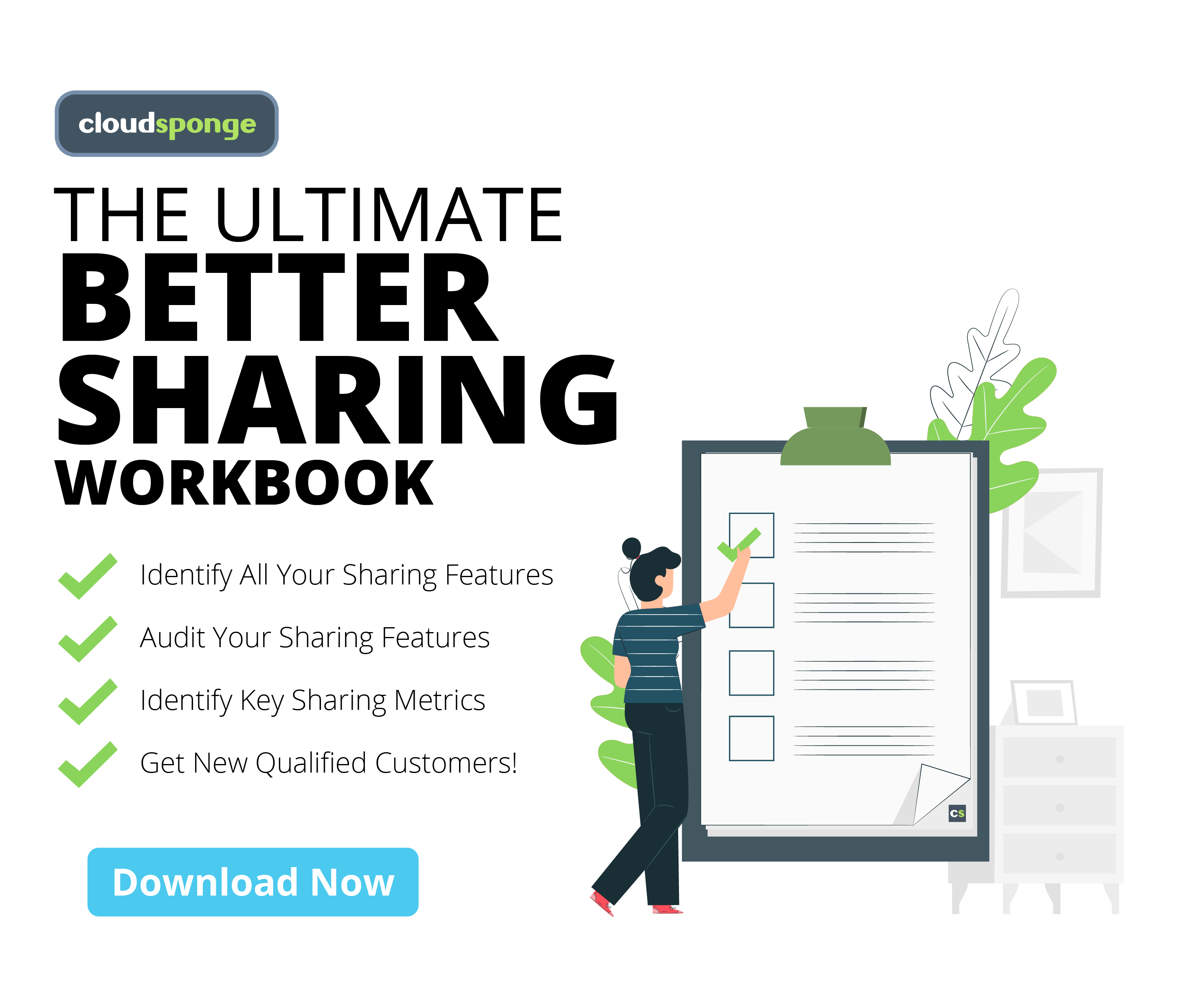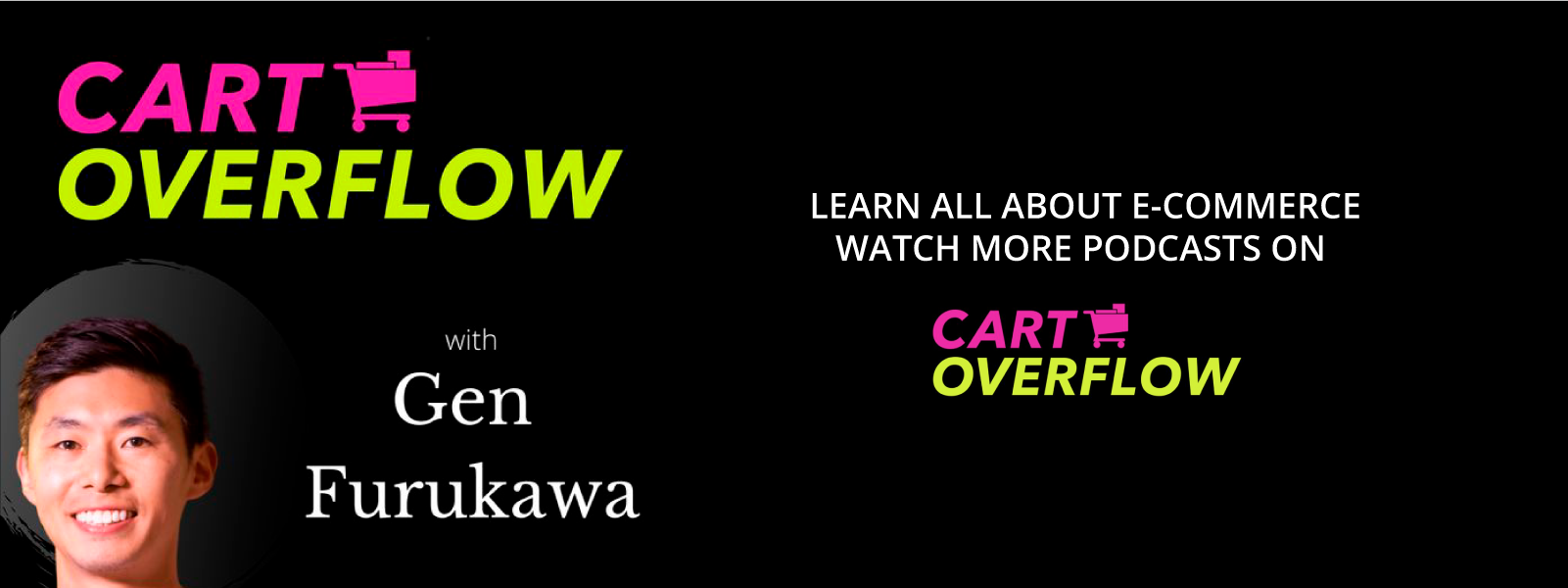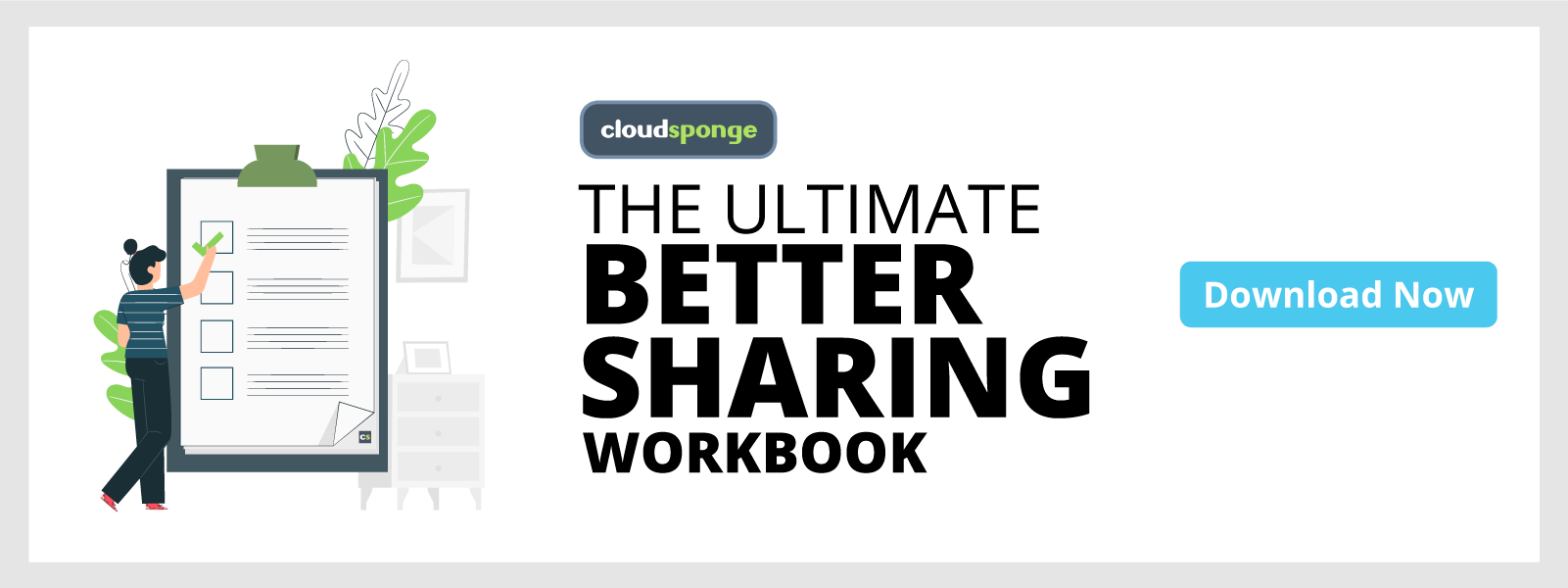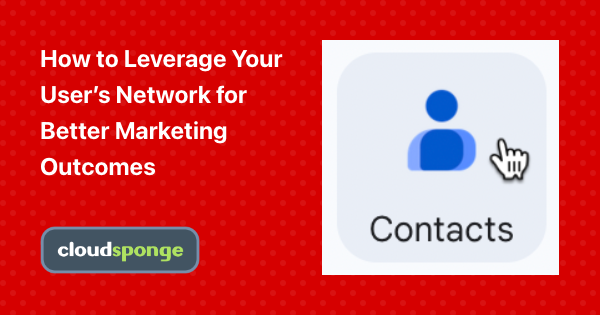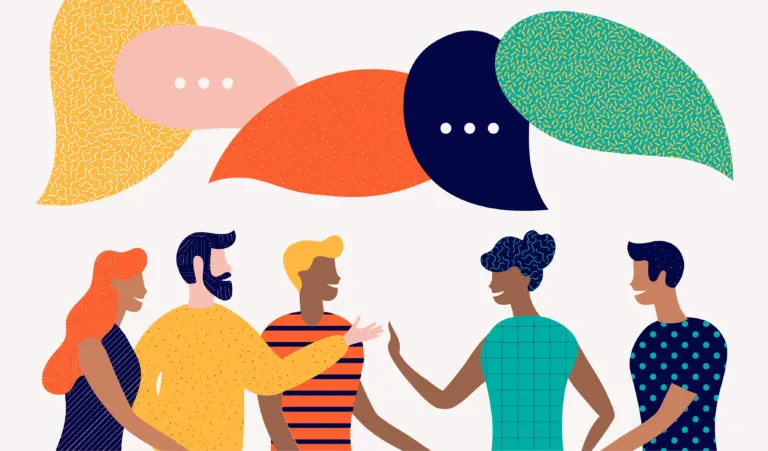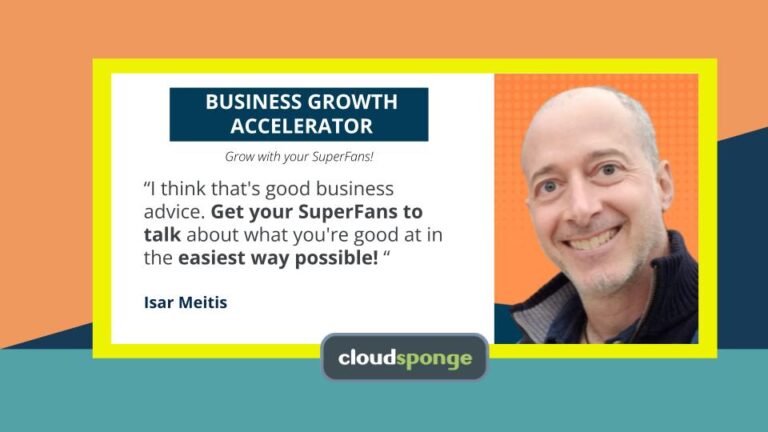Gen Furukawa from CartOverflow recently hosted a podcast with our CEO, Jay Gibb, to take a deeper look into the building blocks of a great referral program.
In conversation, they discuss how to get started with determining the structure of a referral program, the right cap for an incentive to offer, the importance of personalisation to drive conversions, and the industry standard best practices adopted by top e-commerce brands such as Stitch Fix, Reebok, American Giant, and more.
Audit your e-commerce sharing features to find out how you can double the performance of your referral programme.
Podcast Transcript
Gen Furukawa:
Today we have Jay Gibb, who is a founder and CEO of CloudSponge, which is the most effective way to get people to share eCommerce products. And so Jay, we were just talking offline and I thought maybe we could start recording because it is really interesting that for a software business, you have been around for, it was founded in 2010, so 11 years. And you’ve kind of manoeuvred your way and focused on eCommerce as a way to help drive word-of-mouth. And so to start with, I’d just love to hear a little bit more of how that evolution happened and why you’re focusing on eCommerce now for CloudSponge?
Jay Gibb:
Yeah, sure. So we started long ago and the classic story, in the process of building something totally unrelated and struggling with the internal problem, which we realized lots of other people have the same problem. And so we ended up pivoting entirely in the direction of that problem. And really what that was at the time, and that was back in 2010, was address books and invitation forms and user interfaces. Giving users the ability to select people from an address book like from Gmail or Yahoo or AOL or MSN or Hotmail or wherever they kept their address books and putting that into an invitation interface right, so that they could select more people, make fewer typos, gets through the process of typing. At the time mobile phones were less sophisticated than they are now obviously, but now we realized that address books is such a big thing, right.
Jay Gibb:
And so we built it for ourselves and originally we just built an API. It was just an API. And our customers, at the time, were teaching us the use cases, right. So we had newsletters using it, we had social networks using it to import your address book to find all your friends quickly, right. We had CRMs using it to import address books to populate your profile inside of CRMs using so that you could do outreach. We have companies using it for their referral program interfaces. Fast forward to now, thousands of customers later, we’ve just done an analysis of all of our customer’s use cases. Why did they use this tool? What did they do with it? And we’ve gone and torn down their interfaces and their wins and their losses and looked for those patterns.
Jay Gibb:
And one of the patterns that emerged when we did this analysis was, the strongest use case is for eCommerce, right. This were situations where we’re in a B2C environment and the people using the website or ordinary consumers, from B2B website where the people on the website would be doing like a CRM import, right. And we found our customers were using it in various creative ways inside their eCommerce checkout experiences and referral programs and wishlist and coupon delivery and all kinds of stuff that exists inside eCommerce, and also the consumer side of marketplaces, right. So something like Airbnb, for example, on the consumer side of Airbnb, it’s basically eCommerce right, you’re checking out with a reservation for an Airbnb.
Jay Gibb:
So we did that and that’s why we ended up choosing this segment or this positioning around eCommerce because it’s the one that is easiest to explain and has a really great story and use case and lots of success stories around it. And so we’ve just decided that, that’s what we’re going to focus all of our intention for the foreseeable future.
Gen Furukawa:
Nice. And clearly, you’ve, the feathers in your cap in terms of the customers using it is the household names, Stitch Fix, Reebok, JustFab, and so I think you had a really good breakdown of how it works on your site, but just to reiterate and make sure that I do capture everything myself. Stitch Fix, for example, you might see on the signup page, refer a friend, you get $25, they get 20 bucks, and then so you click it and then from there an address book pops up, you choose whoever you might want to send it to, you click send it actually opens up your native email right, so for me, it might be like Apple Mail or whatever, and then it just sends you a pre-populated text form.
Gen Furukawa:
And then it has a link that is unique to you so that you get credit as a referrer. And the person who signs up is more incentivized just because they have some discount, $20 off, or something. And so in that way, it’s a way to lower acquisition costs and drive growth in a somewhat viral way of people sharing out of their own volition.
Replicate the success of your favourite e-commerce brands
Download the Better Sharing Workbook today!
Jay Gibb:
Yeah. And what you just described is almost entirely Stitch Fix custom software, right. So the important thing to distinguish CloudSponge and where does CloudSponge kind of fit in that whole stack, is we don’t provide a referral program platform. That’s a very competitive vertical, and we partner with all the best companies in that vertical. So as far as sending a referral link, or you’re sending an email at all, or making a choice about whether or not you’re going to use the native email client or not, and all those kinds of technical and UI choices in that case, that Stitch Fix made those choices, right. And they’re sending that $25 coupon and providing the free $20 fix credit and all that kind of stuff. CloudSponge is not doing that.
Jay Gibb:
The place where we live is where a company like Stitch Fix in this case has a referral program like that, and they just want to double its performance, right. They want to make it twice as good, and what they’ll do, to do that is they’ll add CloudSponge or the CloudSponge Contact Picker to the input fields for the email addresses, right. So the part where the address book contents are being displayed to the user so that they can go and select people from their contacts without having to switch to a different window or typing somebody’s email address from memory or trying to construct a comma-separated list of email addresses on their phone, which is basically impossible, right.
Jay Gibb:
They’ll take that input for you, which is really the most important input field in the entire system, the entire referral system, and increase its performance by adding the CloudSponge Contact Picker. So that right beside that field, and if you go to Stitch Fix, you’ll see this it’ll have imported your contacts from Gmail, Yahoo, AOL, Windows Live, whatever they’ve chosen to display there, all of those buttons, those are all powered by CloudSponge. Those buttons will give the user a way to select their contacts and then put them into that field. And by doing that, makes the existing referral program, the Stitch Fix built just that much better. It makes it so much better.
Gen Furukawa:
Okay. That makes sense. So in that sense, what you are providing is instant access to their AOL, Gmail, Yahoo accounts, and then the double the performance part is basically that the user will think about who they want to send it to. And so in that sense, it’s a little bit more targeted of a message, so that it’s just easier instead of a blast to 14,000 of people that you might’ve emailed who have craigslist.com emails, you’re hand-selecting those. That’s where the 2X comes from?
Jay Gibb:
2X comes from a combination of things. In our case, it comes from anecdotal evidence that we’ve spoken to enough success stories that they all universally end up around that number. Adding your stuff just doubles, it just doubles everything, right. And the way that that happened, the reason why that ends up being the outcome, I think is more email addresses get inputted into the field first of all, right? So if you put two fields, two referral forms side-by-side and one of them is making you type email addresses, like you type out a comma separating those email addresses, and the other one has the same thing but it allows you to import from your contacts right, on average the first form, anybody that uses it will on average only import one email address, right. They’ve thought of a person it’s a little bit irritating, they’ll type it.
Jay Gibb:
And hopefully they’ve memorized this person’s email address and they can just type it, if not, they got to look at their phone, switch to a different tab, figure out some way to copy and paste the email address into that form field, and then they send it, right. But in the second scenario where the Contact Picker is there, the average, and we’ve got data that we use to prove this is three and a half email addresses. So rather than just one there’s actually… Because now it’s fewer steps, you just log in, we authentic, give the I guess Stitch Fix or whatever permission to read your contacts. And now you’re looking at an alphabetized list of everybody. And by the way, everybody that accepts this you’re going to get 25 bucks for it, right.
Jay Gibb:
They’re giving you that incentive to do more of it and now, because it’s so convenient, you’ll on average, most people will select three and a half email addresses instead of just one, which is what they would’ve done in the absence of that Contact Picker.
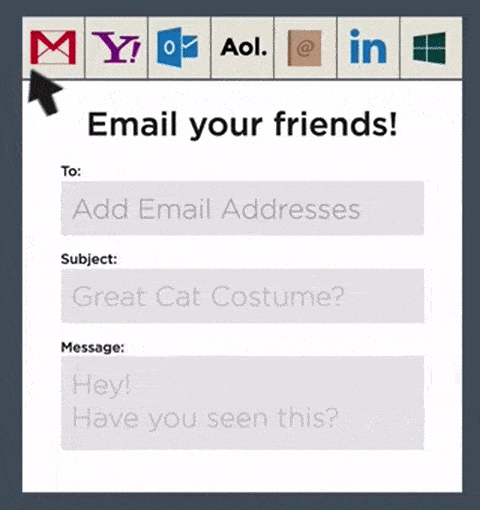
Gen Furukawa:
Yeah. So I would love to dig in a little bit more of the data that you’re talking about and learn the mechanics of it and what some of the best practices are. Like, for example, when is the best time to actually ask for that? Because there is definitely a benefit for the shopper to do it because, Hey, you’re helping me, the shopper, I’d send it to a friend and we both get something that we’d want, but it’s a little bit of work and you probably want to prioritize a conversion, right. So I’m guessing maybe it might be post-purchase and/or maybe on the onboarding stage, but you know, so I’d love to learn maybe what you’ve seen so far.
Jay Gibb:
Yeah. Yeah. Well, thanks for saying that at the end of that, because it is really what I’ve just seen. We don’t run an eCommerce store ourselves, right. We get to just see anecdotally what everybody else is doing. And what we’ve seen over and over again is the best companies are the ones that do split testing. I think that all of your audience already knows that, right. There is no single answer for everybody, but what appears to be the obvious starting point for that, if somebody in your audience hasn’t done anything yet. There’s a referral program that’s inside the customer experience, right. So in other words, for paying customers, that’s a good starting point. Companies will take, once they’ve done that and they’ve established that base camp right, then they’ll start to experiment with other places.
Jay Gibb:
For example, coupon post-purchase is another type of referral, right. Sending a coupon saying, “Hey, you just bought this widget. You just bought this book. You just bought this mouse, whatever it is you bought, if you can think of anybody else that might also want to buy that mouse or something else from our store, here’s the $20 off coupon or whatever that they can send.” Again, another place where you’re able to give somebody access to their address book, so they can think of all the people that might want to buy that thing and share it with them. One of the things that more aggressive product companies and product design teams will do sometimes is they’ll make that available to anonymous users.
Jay Gibb:
And Stitch Fix actually, coincidentally is one of those where if you went to Stitch Fix and you’re totally anonymous and you’re not a paying customer, you can still earn $25 worth of credit, right. And you can still send somebody free to fix, which is like with Stitch Fix because it’s like a subscription box for clothes. The first thing you need to do is pay 20 bucks to get the fitting, and then you get 20 bucks off your first purchase of clothing. They provide both sides of the double-sided referral program to anonymous users too. So if I’ve never used Stitch Fix and neither have you, I can type in your email address, you get an email from them via me, right. Where you get a $20 free & fix. And then if you go and buy something, they’re going to tell me that I just earned $25 from the store credit, right.
Jay Gibb:
So I find that to be really interesting. And just in terms of it being available to anonymous users and then general public in a way, like an acquisition strategy for people that maybe they’ve got an audience that would love this product, but they’re not necessarily ready to buy from them just yet, right. So we’ve seen some of that as well, too.
Gen Furukawa:
I wonder if I’m being cynical, but the first thing I thought about was a fraud, potential fraud, of people sending it to themselves, and then they double-dip $25 coupon and $20 off on their fix. Is that what you were referring to as well, in the sense that you’re surprised at stuff?
Jay Gibb:
I’m only surprised by it because it’s definitely aggressive, right. And fraud is a part of it. And that’s why, frankly, that’s a huge part of what a lot of the referral program platforms provide, right. They provide that fraud protection or indemnification from fraud for the really expensive enterprise-level ones. But that’s where you’ll get that, those fraud scrubbing and fraud mitigation and reduction tools from referral program platform for anybody that doesn’t have an engineering team to sort that up in the referral space, there are plugins for that, for WordPress. And I’m sure that there are some partners of ours that are using Shopify and so on that provide some of that fraud scrubbing.
Gen Furukawa:
Sure. Now what about the actual, the makeup of the offer and what I mean by that is like, is there a correlation of what you might offer to actually getting people to act on it, whether it is a dollar amount and a certain dollar amount, or it’s something that’s a little bit more nebulous, maybe do you get free shipping or credits or. I’m curious to know, the types of offers that you’re seeing and what actually works best for the brands that are using those?
Jay Gibb:
Right. I can only answer that question by telling stories about the companies that I’ve seen and what they’ve, what I’ve seen them do. Generally, the ones that will perform well are the ones that are double-sided. Especially in the B2C eCommerce space, where it’s one thing for your customer to earn a discount on their next purchase, which is great for retention and bringing them back, right. And you can say, “Hey, for every person you refer to get 20 bucks or 20 bucks off your next purchase.” Or something along those lines. That’s really the most common reward is some kind of cash credit towards another purchase because that’s good for the customer, it’s also good for the business. Because everybody in eCommerce is trying, is constantly, perpetually trying to get their existing customers to come back, right.
Jay Gibb:
That’s why we all have mailing lists and nurturing campaigns and social media pages and things like that, is to get that customer base to be repeat purchasers, right. But the thing that seems to have even more power is the other side of the referral program, where you’re giving your customers a way to send credit to their friends, right. And they’re able to say, “Hey, I got this special opportunity to save you 20 bucks on this thing that I know you’re going to love, or this thing that I know you need or you want, and they’ll send that coupon. And if they know that, that’s the case, and I don’t know about you, but this has happened to me in my personal life, where I’ll be talking to a friend about something that I like, and they’ll be like, “Wow. Yeah, that sounds great.”
Jay Gibb:
And then I’ll remember, oh yeah, I can send you a $20 coupon if you want, and then I’ll go back to the store and I’ll do that thing, right. And I’ll go send somebody that I’m talking to that coupon, right. And then that brings them, that gives them the trigger to come and redeem it. And then they do, it gives me that trigger to spend more money at that store because I just got some free credit, right.
Gen Furukawa:
Yeah. I definitely have, I think Uber has done a great job with this, Lyft and giving out their referral codes. And probably one of the most famous ones is Dropbox, right. Dropbox, when they first launched, they drove their viral campaigns based on, I think you started with what 500 megs or something, and then for every person that you referred, you get another 250 or something and you max out after five people, or something like that. But I think that might be in my mind, one of the best examples and use cases of something like you’re referring to.
Jay Gibb:
Yeah. Anybody listening to us, I think if you’ve got something more clever than store credit to offer, then by all means do it, you can try it out and see how those messages resonate. I think for the eCommerce crowd, store credit is the most obvious thing. Again, it’s that base camp. Just start there, and then if you want to try free shipping, or you want to try including a gift in their next shipment or something along those lines, then by all means, right. But as far as the baseline of things that obviously work for a large swath of the eCommerce businesses, store credit seems to be the one that is universally understood by customers.
Gen Furukawa:
Yeah. And I should comment on Dropbox, memory scales infinitely, but store credit, that does have an impact on your margin so you can, if you’re a brand you can’t necessarily offer free whatever, like Dropbox storage space. So maybe it’s not a great example that I used, but yeah, with that said, do you have any thoughts on how a brand should consider this in terms of impact to the margin where you might want to cap it? Or is it maybe just more as a part of the promotions and discounts strategies just as a whole?
Jay Gibb:
I think that it should be segmented with its own customer acquisition costs. I just think that, any sophisticated eCommerce store is already calculating their cost of customer acquisition on a per-channel basis. So if they’re doing Facebook ads, they’re figuring out how much Facebook spending do I need to generate a certain amount of revenue. And so I would think of this in a similar way and just think of those rewards as being the cost of customer acquisition, at least at first, right. When you’re kicking the tires and getting used to it. Eventually, I believe you could get more sophisticated with it than that.
Jay Gibb:
And if you’ve already got metrics inside your organization for like you said, discounts and coupons and things like that, then you could consider making it more complicated than having one side of the referral program be included in your discounts and coupons side and the other side and being in your customer cost of acquisition. I think the easiest way for me anyway, to think about it is just, it’s just the customer acquisition costs. I built this thing, everybody that comes in to the referral program, I’m going to give them some kind of credit and that’s my acquisition costs for those people. And then if I’m also on the other side of the double-sided referral program, then I need to add that amount that I’m giving this individual to that acquisition costs from the new customer.
Want to bring down your customer acquisition costs?
Download our 3 Step Workbook today!
Jay Gibb:
And then as long as you’ve got a baseline and you know how much it costs you to acquire a customer from other channels, you have a basis of comparison for it. Then I think you can use that to choose your rewards, to make it something that’s at least similar to your other channels, or hopefully better than your other channels, if you can really get it going, right.
Gen Furukawa:
Yeah. So if I have a breakeven CPA, cost per acquisition threshold of say a $100, then I can offer $50 to the person who refers and then $50 to the person who signs up. And then therefore that’s pretty much like where I’d want to add the highest ceiling, set my incentives. So, yeah that makes a lot of sense.
Jay Gibb:
Yeah, I mean, you could choose that as a ceiling to start at and try to work it down, which is usually a little bit harder than the other way around. So like you could start at 20 and 20 and then see how it goes and then ratchet it up 25, 25, 30, 30 until you get to that place where your metrics are showing that’s where the right number is. So that hopefully ideally you end up with a customer acquisition costs for this channel that’s less than in your example, 100, right.
Gen Furukawa:
Yeah. And like you’re saying it, it might have acquisition costs so yeah, you’re right, I should have started at 25 and 25. But one caveat is, at least this is just for Stitch Fix, but I imagine this for everyone is the person who refers only captures that $25, if the other person signs up and becomes a customer. It’s not like you send an email to five people and you get $125 immediately. So there does have to be that act on the other side in order to complete the referral transaction.
Jay Gibb:
Yeah. Yeah. So there’s something else to point out with that and you’re totally right. And that’s the way that you make sure that this kind of thing doesn’t get away from you financially, right. But it’s also the thing that will remove the incentive for fraud, right. Like somebody can send as many emails as they want, but if they’re all bogus then, and they all, none of them turn into paying customers, then they just wasted their time, right. And so I think as long as you think about, you think carefully about the triggers for when the rewards are actually redeemed by each party, you can take the teeth out of any fraud or to take away the incentive for anybody to bother with trying to do something fraudulent, right.
Gen Furukawa:
Yeah. So now can we get a little bit tactical? You mentioned that you work with partners, so CloudSponge is the little, I guess, widget that you might choose, which email service provider you’re going to choose your contacts from, but that you work with referral programs. And really, I might be familiar with ReferralCandy, I believe is one, but can you just summarize what the landscape of these referral programs are, and what you’d actually need in order to get started with a referral program?
Jay Gibb:
Yeah, sure. So in the WooCommerce universe, one of our partners is AutomateWoo. So there’s, I think it’s $79 plugin or something like that, for WooCommerce sites that uses… Basically AutomateWoo ends up being an internal administration tool that you can use in your WordPress dashboard to keep track of all the referrals that have been sent and received. And then CloudSponge has a plugin called Better Sharing that will basically improve the AutomateWoo interface, referral email personalization, which I can tell you more about and the Contact Picker, which I already mentioned. And so it basically is a way to create a referral program using the AutomateWoo platform inside of a eCommerce site, and then add Better Sharing to that, to basically get that doubling that I mentioned, right.
Gen Furukawa:
Okay. So that basically completes the transaction and yeah, I would love to hear more about the personalization, it’s one of the things that I love to learn more about, and I think in some ways it’s how brands will differentiate and isolate themselves from the competition or create a defensive mode. How does personalization work with referrals?
Jay Gibb:
So in this case, if you think again, the best way to describe it as like a side-by-side, right. So if you imagine an ordinary form where you’re asked to enter an email address to send a referral, right. The email that gets sent is almost never personalized for the recipient, right. It’s some story you’ve never heard of, and then in the subject line, it’s something’s generic like I think you’re going to love this, right. And then it’s like, “Hey, click on my referral link and you’ll get it.” And there’s no mention of you the sender, there’s no mention of the recipient, their name’s not in there, nothing’s in there. So it ends up getting caught in spam filters or just getting deleted and it just looks, it looks terrible. It doesn’t look like a good email, right.
Jay Gibb:
And so I think it’s a starting point for a lot of these referral programs. And I can’t tell you how many I’ve seen that have that, just as an internet citizen, somebody that I just use the internet all the time. Because I’m in this space, I can use every referral program I see. And it’s nine out of 10 have this unpersonalized email where, it’s me sending you an email through a store, but the email that you’re getting has no mention of you or me in it, the only thing in it that’s personalized is your email address, right. Now take that same form and imagine that the address book, I used my address book to select you from my address book to populate that form, right. So now that form, it has my name because I authenticated with Gmail or authenticated with iCloud, or I did something to identify myself in that credentials, permissions window, right.
Jay Gibb:
And it’s got your name and your email address, your first name, your last name, your email address. It might have anything about you that I keep in my address book, right. It might have your mailing address. Your city that you live in, it could have anything, right. And now as a part of that form, that’s being submitted, the software developers that are building that form, can send a perfectly personalized email, right. The email that gets sent rather than coming from some store you’ve never heard of it can now be Jay Gibb, via some store I’ve never heard of. So now my name, your friend, somebody that you know, my name is in the front field of the email address and shows up in that call in Gmail, right.
Jay Gibb:
So all of a sudden now you’re seeing that this messages from me, rather than it’s from me via the store, but it’s from me, somebody that you recognize, right. Which is the first thing that’s going to increase your ability to stay out of the spam first, but then it’s going to make it, make your open rates quadruple.
Gen Furukawa:
Yeah, it makes sense.
Jay Gibb:
Because now rather than me just having, or the site, or the store only having your email address that I typed in, it’s also got your name, right. So now I can put your name, you’ve got my name in the front field and I now can put your name in the subject line, right. So again, your open rates are going to double or triple or quadruple. They are going to go way up through the roof compared to whatever you’re seeing right now, just by using address book data to personalize the referral email, right. And then inside the body, now you’ve got all this data, and you can do whatever you want and you can do whatever your technical sophistication limits are as far as salutations, signatures, other types of personalization stuff that I know, I’m sure a lot of your audience is experts at.
Jay Gibb:
But it ends up making it so that you can do all that without asking your user to type in all that personalization data into the referral piece, right. And I’ve seen people try to solve this before, not so much in eCommerce but more so in the eCard and event invitation space where it’s like… And you may have done this before, if you ever tried to send like a holiday card, or if you tried to send a gift registry or a wedding registry email to people or an event invitation, where it’s this grid of fields, first name, last name, email. First name, last name, email, first name, over and over and over again right, and you keep doing that. And that’s basically a reflex that interface designers have in the absence of an address book, right.
Jay Gibb:
And the address book situation where you’ve got the Contact Picker there, all that data just is inside the sessions and you can use it without the user having to type anything at all.
Gen Furukawa:
Yeah. But if you are a merchant, are you still able to see those analytics in terms of open rate or click through rate? Or is that more therefore housed, you have access to that just because it’s maybe sent from a different provider?
Jay Gibb:
Yeah. That’s going to be sent by the referral program platform, those emails, right. So it really depends on which platform you choose. And if that’s important to you, then you should do your vendor selection with that as one of your criteria, right.
Gen Furukawa:
Yeah, that’s a good point.
Jay Gibb:
Being able to see that stuff. If you use a plugin, like the Better Sharing plugin that I mentioned from CloudSponge, it’s able to connect to your transaction email provider so that you get that reporting from SendGrid or Sendinblue or Klaviyo or whatever tool you’re using to send emails, right. And so there’s a few different ways to get that. It’s not something that CloudSponge itself really has visibility into, because it happens after the Contact Picker has already done its job, right. So as long as you’re choosing or building a referral program platform that shows you those open rates and shows you conversion rates and things like that, then that’s where you’ll get it. That’s where you get the answers, right.
Gen Furukawa:
Okay. Yeah. That makes sense. And thank you for sharing this. Now, basically to wrap up, I wanted to go through and summarize that. I make sure I know it, and then I can share it and make sure that there are no missing steps. I want to start this. Obviously everybody wants to reduce their CAC in half and increase their referrals by double, the benefits are very compelling. How do I actually start? First you might want to choose where in the customer journey makes most dent or customer experience makes most sense. So what page or what are you trying to incentivize, so that might be the first thing. Then you’d want to get into the numbers and the economics of it, of what you can afford to give. That would be both interesting to the customer and then doable for you as a brand.
Gen Furukawa:
And you need to consider maybe the two sides of that, right. The recipient and the person who is sending the referral, then you probably want to choose your referral program. And in addition, a way to make it easier. And that’s where you come in with CloudSponge, and then you probably want to just AB test it and make sure that you indeed are getting the right customer experience. You are getting people to sign up. And then also maybe just some checks and balances that there is no fraud, people doing things that they obviously shouldn’t be doing. How does that sound as a tactical approach to launching a referral program?
Jay Gibb:
Yeah, I think you got it. I mean, it definitely makes sense. Obviously the fuzzy part is in the middle, right. The choosing the program part. So historically because of the nature of CloudSponge’s history, most of the people that are using CloudSponge’s Contact Picker have basically built their own referral program platforms, right. So they’ve got the engineering horsepower to create something and deal with their own fraud and send emails the way they want them, right. And so that’s you, or that’s the person that’s is able to do that then absolutely go ahead, right. It’s not that hard. It’s not that big of a challenge. And we’ve seen it time and time again, where people can build that. If you’re using WooCommerce on WordPress, then consider AutomateWoo. It’s pretty good. It’s a partner of ours.
Jay Gibb:
If you’re on Shopify Pro one of our partners over there is Conjured Referrals is one of the bigger, more popular ones on Shopify, but we’re also integrated with Talkable and a few other of the big names and referral programs. I mean, some of those guys that I just listed are only after eCommerce stores that are doing millions of dollars a year in sales. So it depends on where you’re at in your journey, that’s obviously a big part of the vendor selection process for the program partners. And this is a rubric that we help our leads with, right. So a lot of times people will come to us, they’ll hear me on a podcast or they’ll resonate with some of our messaging, and they need help choosing a referral program platform, right.
Jay Gibb:
And so usually we’ll ask a few questions and see if we can help them out right, because we don’t have anything to sell in the category of referral program platforms. But as a result of where we live in this industry, we just see them all and we’re able to help store owners make a smart choice for whatever their individual situation is.
Gen Furukawa:
Yeah. I’m really excited because I think I’ve seen this all the time, but didn’t realize the mechanics behind it because I read Morning Brew, so Morning Brew is a customer. And then of course Stitch Fix and JustFab, Reebok, American Giant. So it is something that is proven, and I think in some ways now, maybe especially in this environment where paid ads might not be as effective or cookies are being deprecated, we might be looking towards our social network in terms of who we actually trust and from a brand perspective it’s far better because there is that credibility instantaneously when you have a friend refer, but then it’s just going to be far more cost-effective, so a really exciting channel that I’m just scratching the surface on, so thanks so much for sharing that. Jay, so what’s the best way to find you online?
Jay Gibb:
Well CloudSponge.com is where we hang out. You can go to “cloudsponge.com/cartoverflow”, and we’ll send you to a lead magnet that we’ve got. Basically a free workbook that helps also our customers, our leads get through a referral program inventory, a checklist and an audit and so on to start the conversation. For me personally, you can find me on Twitter, my Twitter handle is circuitfive, F-I-V-E. But mostly people just contact me through CloudSponge, we pride ourselves on being easily accessible. So all over the CloudSponge site, you’ll find ways to book a call with me or join our Slack Community or email us or whatever’s most convenient and comfortable for you.
Gen Furukawa:
Fantastic. Jay, Thanks so much. And that’s the episode for today. Thanks so much for listening all the way to the end, we love you for it. If you found anything valuable at all, or want to share your feedback, please leave us a review on iTunes or wherever you get your podcasts. And you can also just drop us a line at hello@cartoverflow.com, we’d love to hear your feedback or suggestions so we can cover it in a future episode. All right. See you next time.

